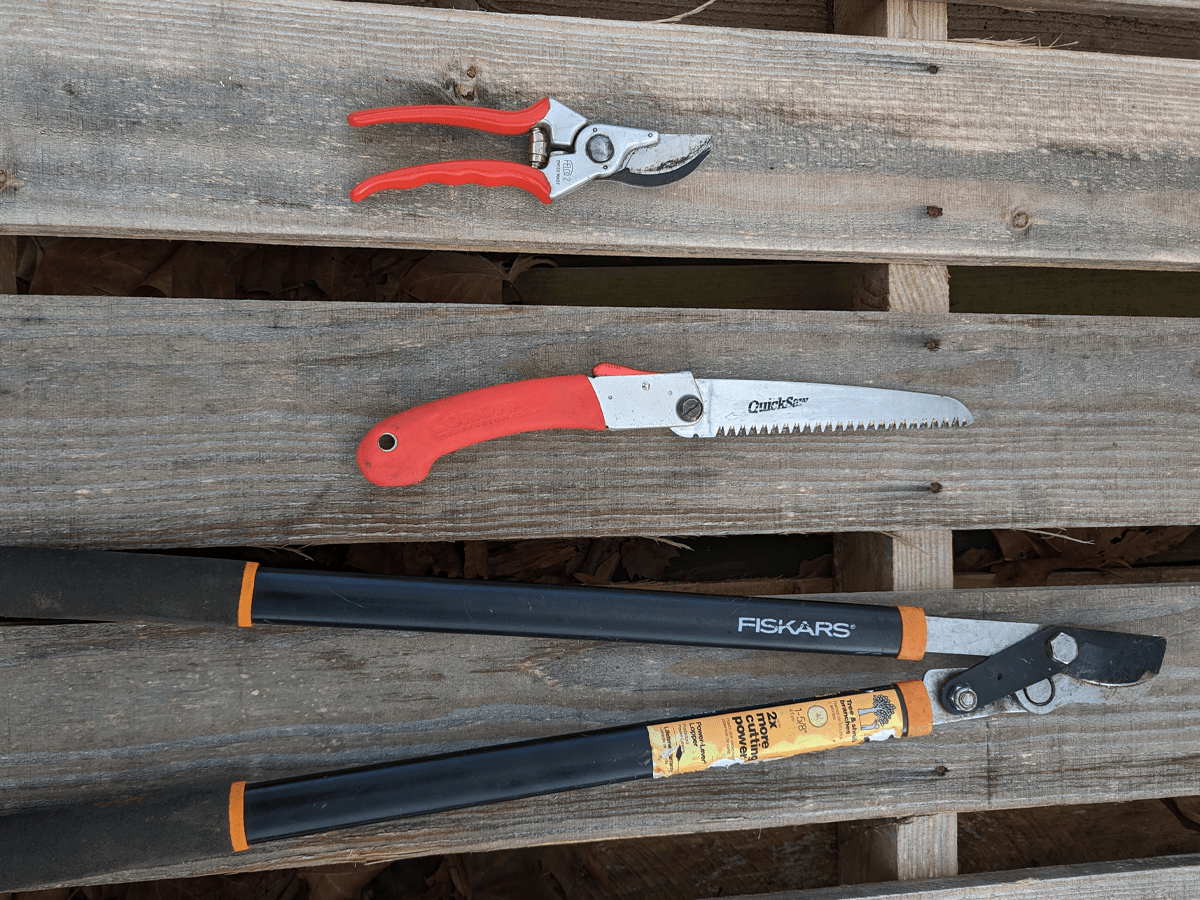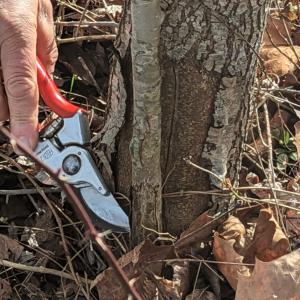Winter is a great time to prune trees! With the leaves gone, it is easier to see the branching pattern of the tree, termed scaffolding. Also, the incidence of disease infection and attractiveness to insect pests are much lower during dormancy. Keep in mind, though that many flowering trees form their floral buds the year before, so topping or cutting back is generally not a good idea, with few exceptions. We’ll get into those exceptions at a later point. The general practice here is to remove branches by thinning. So where to start? Let’s start with why prune trees at all?
Why Prune Trees?
In Medieval times pruning trees took the form of coppicing, a method to ensure a steady supply of firewood. By cutting a young tree to the ground, the roots will send up a number of stems, which are then harvested for kindling wood.
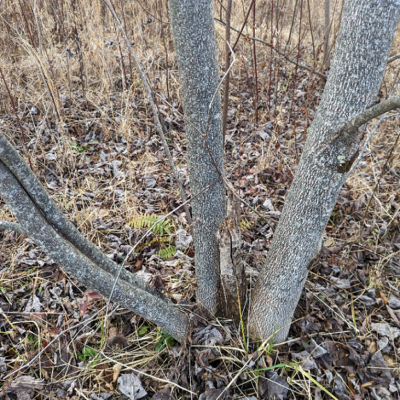
Pruning Defined
Pruning is a method of selecting a leader (upright stem) and arrangement of branches to form a healthy scaffold. Think of the trees scaffolding as its skeletal system. We prune trees to keep them healthy. The best way to keep them healthy is to allow light and air to penetrate and circulate into the canopy. This reduces disease incidence by allowing the lower leaves to dry quickly. We also prune trees to increase flowering and fruitfulness. Orchard pruning focuses on training trees to produce fruit that are within easy reach. Sometimes, we simply want to prune lower branches for clearance. In this segment, we’ll start with the pruning basics, so if you choose to prune your trees, you can do so with confidence, or alternatively, for trees too large to prune, you’ll know what to address when you do hire a professional arborist.
Pruning Tools
You will need some basic tools to prune trees and shrubs in your landscape. These include a by-pass pruner, such as the Felco No. 2 hand shear, a pair of loppers (long handled by pass shears) and a folding saw. In some cases, you will need a pole pruner or an orchard ladder. Use clean, sharp tools to make your pruning cuts.

Pruning Basics
Much like raising youngsters, it is best to start training earlier than later. It is much easier to train a 3-year old than a 13-year old! The same is true with trees. But should time get away from you, here are a few basic faults to look out for: these are crossing, dead, dying & diseased branches and leads forming V-crotches.
Remove crossing branches that are growing inward. This helps to open up the interior of the canopy for improved light and air infiltration. Select the branch that is less vigorous for removal.
First, the pruners point to an inward, crossing branch (L). Then, remove the inward growing branch (R). This opens the canopy for better light and circulation, and cutting away crossing branches help keep trees healthy.
Sometimes, trees just get away from you. Crossing branching will in time cause the two to rub, and results in wounds in the bark. And that’s the rub!
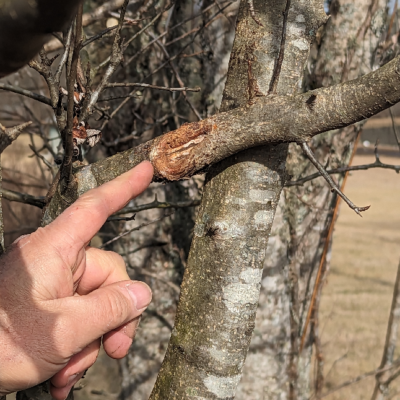
The correct method to remove a larger crossing branch is to (1) first remove the excess weight, and (2) prune back to the finished cut.
Removal of the excess weight in the first cut ensures that the bark isn’t torn where the branch from the stem emerges. Bark tissue protects the sapwood from both desiccation, insect and disease attack.
Pruners point to the final cut (L). The rubbing branches caused injury to the bark, appearing as dark discoloration (R).
Left to progress, crossing branches are entry points for insects and diseases.
Remove dead, dying, and diseased branches.
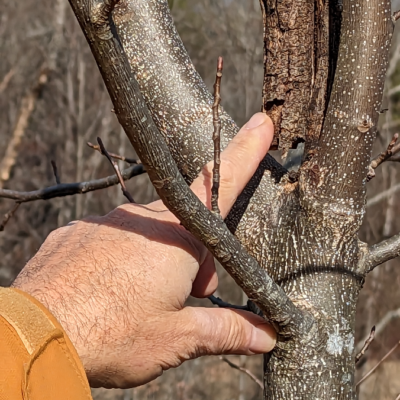
Young trees with an excurrent habit, meaning that they have a strong vertical stem or leader, will often develop competing leads when open grown. In such cases, it is a good idea to remove some of the competing leaders to re-establish strong apical dominance. Trees that have strong apical dominance (excurrent growth) include Tulip tree, Southern magnolia, bald cypress, and pin oak.
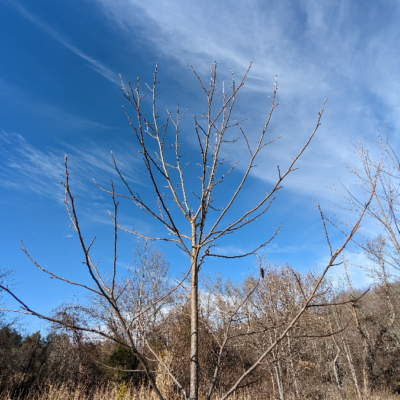
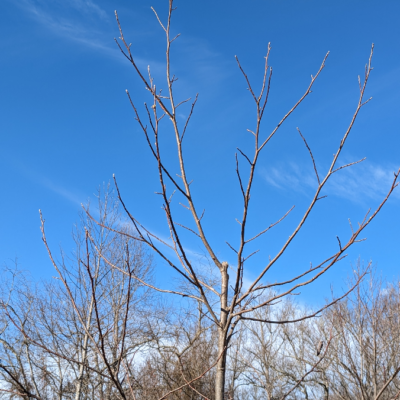

Some trees have a decurrent habit, that is they naturally send up multiple stems as leaders. Some of these trees include Callery pear, linden, oak, hickory and maple. Strong competing leaders form a “U” crotch.
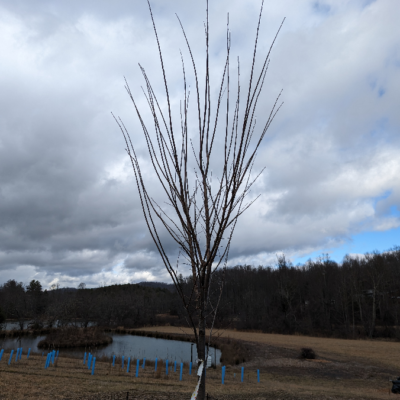
Some trees will produce water sprouts and root suckers. Water sprouts arise from branches and grow rapidly. Root suckers emerge from the base of the tree. Remove water sprouts and root suckers – both are forms of spurious growth!
~ Signing off for now, Joe

